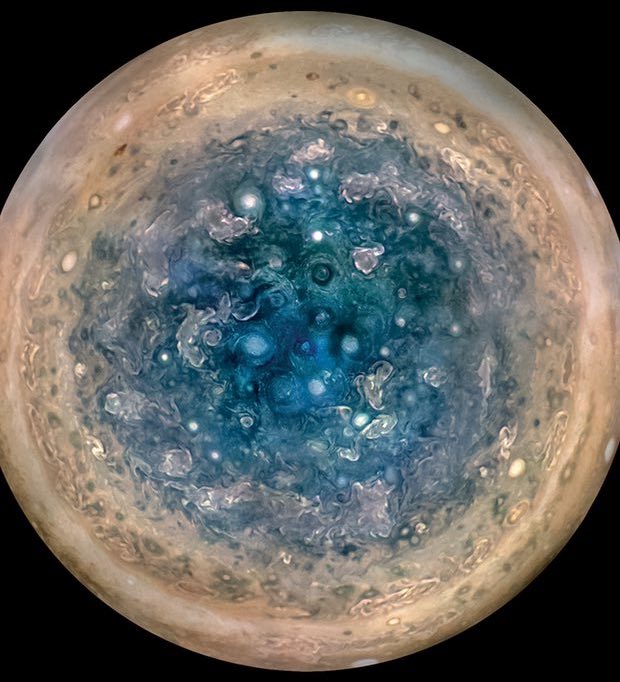The first scientific results about Jupiter have arrived from the NASA Juno spacecraft, providing us with new insights about the gas giant.

Juno is able to look much deeper into Jupiter’s thick cloud cover than any other spacecraft previously. It was also closer to the planet at a lower altitude than any other previous spacecraft. Able to do detailed studies of the planet’s atmosphere.
The Juno spacecraft was launched in August 2011 and it arrived at the planet last summer. It has since been probing the planet in a polar orbit around the planet, collecting data, resulting in two research papers now published in the journal Science. And there are a lot of surprises.
The first data stems from Juno’s very first sweep around the big gas planet. Among other things, we got a spectacular weather report, with cyclones that were up to a thousand kilometers in size.
Juno peaked deep inside the thick atmosphere and revealed clues to what generates Jupiter’s immensely powerful magnetic field. The magnetic field of Jupiter turned out to be stronger than previously thought, about ten times stronger than the Earth’s own magnetic field.
There appears to be a kind of dynamo of electrically conductive materials that spins around and around that generates the magnetic field. The location of the apparent dynamo was surprising as it turns out to be located further out of the core than previously thought. This says a lot about the material. It is possibly some kind of metallic hydrogen under enormous pressure.
There were several explanatory models to how Jupiter’s interior looks like, and scientists generally agreed that the planet had a solid core. The new measurements, however, do not match these previous models.
The data now arriving from Juno will bring us closer to the space probe’s main objective, to improve our knowledge of how Jupiter was formed. It also enables us to understand more about how our own planet and even other solar systems may have been formed.
But we are only scratching the surface and Juno will continue to provide scientists data giving us fascinating insight.
References:
S.J. Bolton et al. Jupiter’s interior and deep atmosphere: The initial pole-to-pole passes with the Juno spacecraft. Science May 25, 2017. DOI: 10.1126 / science.aal2108
J. E. P. Connerney et al. Jupiter’s magnetosphere and aurorae observed by the Juno spacecraft during its first polar orbits. Science May 25, 2017. DOI: 10.1126 / science.aam5928











![OpenAI. (2025). ChatGPT [Large language model]. https://chatgpt.com](https://www.illustratedcuriosity.com/files/media/55136/b1b0b614-5b72-486c-901d-ff244549d67a-350x260.webp)
![OpenAI. (2025). ChatGPT [Large language model]. https://chatgpt.com](https://www.illustratedcuriosity.com/files/media/55124/79bc18fa-f616-4951-856f-cc724ad5d497-350x260.webp)
![OpenAI. (2025). ChatGPT [Large language model]. https://chatgpt.com](https://www.illustratedcuriosity.com/files/media/55099/2638a982-b4de-4913-8a1c-1479df352bf3-350x260.webp)








